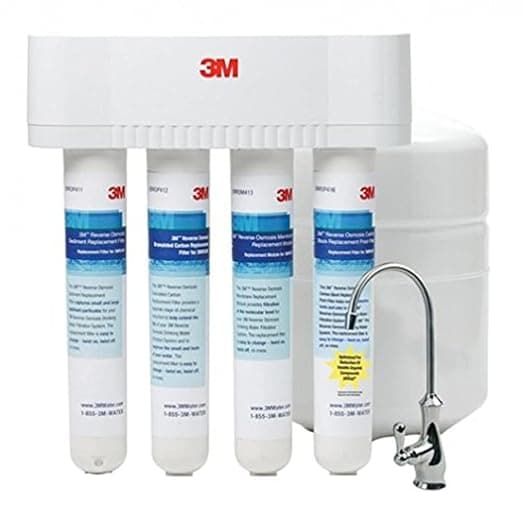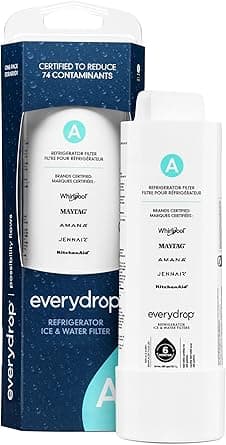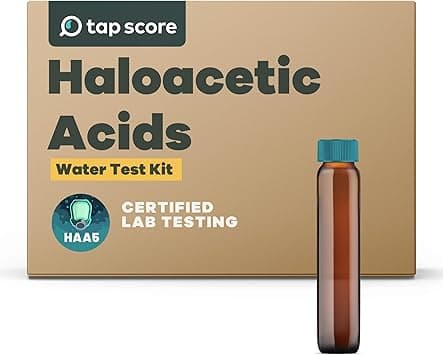Atlantic City Tap Water Quality Report
Atlantic City's water has 10 contaminants above EPA MCLGs. We recommend using a certified water filter.
Utility
ATLANTIC CITY MUA
People Served
152,415
MCL Violations
0
Last Updated
Is Atlantic City Tap Water Safe to Drink?
Atlantic City's water has 10 contaminants above EPA health-based guidelines. We strongly recommend using a certified water filter to reduce exposure to these contaminants. Check our filter recommendations below for NSF-certified options that can remove the specific contaminants found in Atlantic City's water.
The data below shows test results from ATLANTIC CITY MUA, which serves 152,415 people in the Atlantic City area. Water quality testing is conducted regularly and reported to the EPA. This report was last updated 2024-05-04.
Atlantic City Water Quality Test Results
Key Water Quality Metrics
Contaminants Detected
⚠️ Contaminants Above EPA MCLG (10)
Perfluorooctanoic acid
What is Perfluorooctanoic acid?
Perfluorooctanoic acid (PFOA) is a synthetic chemical that belongs to a group of chemicals known as per- and polyfluoroalkyl substances (PFAS). It is used in various industrial applications and consumer products for its water- and grease-resistant properties.
Health Effects
Exposure to PFOA has been linked to several health issues, including developmental effects in fetuses, increased cholesterol levels, liver damage, thyroid disease, and certain types of cancer.
Affected Organs
Common Sources
Bromoform
What is Bromoform?
Member of trihalomethanes (THMs) that form in water treated with chlorine
Health Effects
Health protective benchmarks for bromoform are based on liver, developmental, and carcinogenicity observed in animal studies. Results from animal studies also suggest that exposure to bromoform can also lead to liver, kidney, and developmental toxicity. Bromoform has also been shown to produce DNA changes (genotoxicity) in laboratory studies.
Affected Organs
Common Sources
Arsenic
What is Arsenic?
Naturally occurring element that has both inorganic and organic forms
Health Effects
The EPA drinking water standards for arsenic are based on adverse effects to the cardiovascular, pulmonary and liver systems in drinking water with inorganic arsenic, as well as an increased risk of cancer. Long term health effects of total arsenic in drinking water include bladder, GI tract, kidney, liver, lung, pancreas and skin cancer, cardiovascular effects, pulmonary and gastrointestinal effects, ocular, immunological, neurological and reproductive effects. Arsenic found in epidemiological studies include developmental effects, socioeconomic and genotoxicity.
Affected Organs
Common Sources
Gross Alpha Activity
What is Gross Alpha Activity?
Gross alpha activity measures the total amount of radioactivity in a water sample emitted by decaying alpha-emitting elements, notably radioactive isotopes of uranium, radium, and radon. Alpha emitters are used to treat cancer, as an eliminator of static in paper mills and in other products like smoke detectors. Radioactive atoms release high energy alpha particles that pull electrons off of the atoms in cells. This process is called ionizing radiation, and may lead to harmful changes in cells and tissues. The toxicity of an alpha emitter depends on the amount of energy it releases and how organ systems respond to that energy. Exposure to elevated gross alpha activity is associated with increased cancer risk and genotoxicity, but toxicity to individual systems is dependent on the type of alpha emitter present.
Health Effects
Drinking water standards for gross alpha activity have been developed based on increased cancer risk associated with alpha radioactivity. Alpha radiation has been shown to produce DNA changes (genotoxicity) in laboratory studies.
Affected Organs
Common Sources
Perfluorooctanesulfonic acid
What is Perfluorooctanesulfonic acid?
Part of a class of synthetic compounds known as per- and polyfluoroalkyl substances (PFAS) widely used to make products more resistant to stains, water, and grease. It is found in fabrics, fire-fighting foams, cleaning products, hydraulic fluids, metal plating, and paper. Although PFOS production has been phased out in the US, exposure is still a major concern due to its high degree of persistence in the environment and in the body as well as the use of legacy products and imported goods. Many adverse health effects have been linked to PFOS exposure, including developmental, liver, and immunological problems and increased cancer risk. EPA has found that there is suggestive evidence that PFOS is a human carcinogen.
Health Effects
As with many PFAS compounds, research into the health effects of PFOS is rapidly evolving. Epidemiological studies have shown associations between elevated PFOS levels and increased total and low-density lipoprotein cholesterol ('bad cholesterol') as well as immune toxicity (decreased antibody response). Animal studies indicate that PFOS exposure is related to adverse developmental effects, liver toxicity, immune toxicity, and an increased risk of liver and pancreatic cancer.
Affected Organs
Common Sources
Bromodichloromethane
What is Bromodichloromethane?
Member of trihalomethanes (THMs) that form in water treated with chlorine
Health Effects
Health protective benchmarks for BDCM are based on carcinogenicity and liver toxicity observed in animal studies. The EPA has classified BDCM as a probable human carcinogen. Results from animal studies also suggest that kidney, immune system, spleen, and developmental toxicity are associated with exposure to BDCM. BDCM has been shown to produce DNA changes (genotoxicity) in laboratory studies.
Affected Organs
Common Sources
Bis(2-ethylhexyl) phthalate
What is Bis(2-ethylhexyl) phthalate?
Member of a family of synthetic compounds called phthalates that are added to polyvinyl chloride (PVC), a chemical used to improve flexibility and durability in consumer products
Health Effects
Drinking water standards for DEHP are based on potential liver toxicity and endocrine effects (impacting development and the male reproductive system), as well as an increased risk of cancer. The EPA classifies DEHP as a probable human carcinogen.
Affected Organs
Common Sources
Dichloroacetic Acid (DCA)
What is Dichloroacetic Acid (DCA)?
Member of haloacetic acids (HAAs) that form as byproducts when chlorine reacts with organic matter
Health Effects
Health protective benchmarks for DCA are based on evidence of increased cancer risk and liver toxicity observed in animal studies. Adverse effects to the male reproductive system have also been associated with elevated levels of DCA in animal studies. The EPA classifies DCA as a likely human carcinogen.
Affected Organs
Common Sources
Perfluorohexanesulfonic acid
What is Perfluorohexanesulfonic acid?
Part of a class of synthetic compounds known as per- and polyfluoroalkyl substances (PFAS) widely used to make products more resistant to stains, water, and grease. PFHxS has been used in protective coatings for carpets, paints, and textiles and as a surfactant in industrial processes. It may also be found in food contact papers, fire-fighting foams, and cleaning products. PFHxS production has been phased out in the US, but ongoing concerns exist due to its high persistence in the environment and the body, legacy uses, and presence in imported goods. Exposure to elevated PFHxS levels may result in adverse effects to the thyroid and liver.
Health Effects
As with many PFAS compounds, research into the health effects of PFHxS is rapidly evolving. Epidemiological studies have identified that PFHxS exposure may be associated with immunosuppression (i.e. reduced antibody response, impacting vaccine efficiency). Animal studies suggest PFHxS may cause increased liver weight, as well as adverse effects to thyroid hormone levels, and motor development.
Affected Organs
Common Sources
Gross Alpha (Excl. Radon and Uranium)
What is Gross Alpha (Excl. Radon and Uranium)?
Gross alpha activity is a measure of the total alpha particle activity in a water sample, excluding radon and uranium. It is used to assess the presence of radioactive contaminants in drinking water.
Health Effects
Exposure to high levels of alpha radiation can lead to an increased risk of cancer, particularly in the bones and other tissues where alpha particles can deposit energy.
Affected Organs
Common Sources
Understanding the Data
This data comes from your local water utility testing. The bar charts compare detected levels against EPA's Maximum Contaminant Level Goal (MCLG). Contaminants above the MCLG are shown by default and may require filtration. All other tested contaminants are within safe levels and can be viewed by expanding the section above.
Recommended Water Filters for Atlantic City
Based on Atlantic City's water quality data, these NSF-certified filters are recommended to remove contaminants above EPA MCLGs.

Solventum Purification Inc.
3MRO401
NSF Certified:
Daily Production
11.48 gpd
Removes 15 contaminants:
Arsenic, Barium, Cadmium, Chromium (Total), Chromium (VI) +10 more

Solventum Purification Inc.
3MRO301
NSF Certified:
Daily Production
11.48 gpd
Removes 15 contaminants:
Arsenic, Barium, Cadmium, Chromium (Total), Chromium (VI) +10 more

Whirlpool Corporation
W11256135
NSF Certified:
Capacity
1001 gal
Filter Life
3 mo
Flow Rate
0.7 gpm
Removes 19 contaminants:
1,2 Dichlorobenzene, 1,4 Dichlorobenzene, 2,4-D, Asbestos, Atrazine +14 more

Whirlpool Corporation
W11569861
NSF Certified:
Capacity
1001 gal
Filter Life
3 mo
Flow Rate
0.52 gpm
Removes 22 contaminants:
1,2 Dichlorobenzene, 1,2,4 Trichlorobenzene, 1,4 Dichlorobenzene, 2,4-D, Asbestos +17 more
Verify Your Water Quality with Independent Testing
With 10 contaminants above EPA health guidelines, independent laboratory testing provides a second opinion and can track changes over time.

SimpleLab
Advanced Home Water Test
$369
Most comprehensive home water test including all standard tests plus additional parameters for ultimate peace of mind.

SimpleLab
Standard Home Water Test
$232
Comprehensive water analysis testing over 200 contaminants including bacteria, heavy metals, and chemical compounds.

Tap Score
Haloacetic Acids (HAA9) Test
$275
Tests for disinfection byproducts formed when chlorine reacts with organic matter in water treatment.
Frequently Asked Questions About Atlantic City Tap Water
Atlantic City's water has 10 contaminants above EPA MCLGs. We strongly recommend using a certified water filter to reduce exposure to these contaminants. Check our filter recommendations below for NSF-certified options that can remove the specific contaminants found in Atlantic City's water.